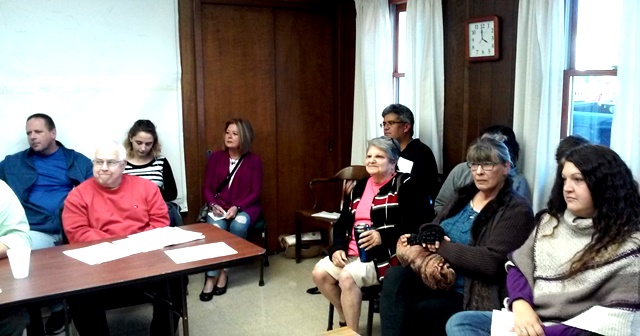
One woman raised the concern of landlords being stuck with bills when tenants move, and others asked about the surcharges on their bills, as well.
Board members explained how the bills are calculated and it was discovered that there was some confusion in regards to terminology.
In regards to sewer, the bill is broken down by operation costs, maintenance of interceptors, plus the increase added in 2016 to cover CMA’s debt service to the Pennsylvania Infrastructure Investment Authority for the loan to construct the new sewage treatment plant.
Board members explained that, since the West Branch of the Susquehanna is part of the Chesapeake Bay Watershed, any sewerage treatment plants in the watershed are under mandate from the federal Environmental Protection Agency and state Department of Environmental Protection to reduce the amount of nutrients emptying into the bay.
As part of this, many municipal authorities have had to upgrade their treatment facilities or pay for credits on the nutrient exchange system.
CMA compared costs between paying for credits, retrofitting the old plant or building a new one, and found it was most cost effective to build a new plant.
Before PENNVEST would approve a loan, with one percent interest, CMA had to show that they would be able to make regular payments on the loan and the option PENNVEST would approve was to raise rates.
The surcharges come from the township and borough to pay for projects regarding the sewerage system. The borough and township own the lines and lateral while CMA owns the interceptors.
According to information provided by CMA, the surcharge to bills began in 1995 as $1 per 1,000 gallons and the surcharge is now $8 per 1,000 gallons.
Residents were encouraged to contact the township and borough about these charges and were reminded to ask specifically about surcharges, not sewer rates.
Engineer Jim Balliet of Gwin, Dobson and Foreman Inc. noted that other municipalities that have lower sewer rates may have different reasons for this.
One is that they may not be in the Chesapeake Bay Watershed, such as DuBois. Or, they may have smaller systems or have not had to upgrade their systems yet.
The board members also pointed out that the budget for the authority, which is a not-for-profit entity formed under the state’s Municipal Authorities Act of 1945, is a public document and can be viewed at any time.
Residents were also encouraged to attend meetings and volunteer for board positions when they become available. Those vacancies are advertised in local media and application is made by letter to either the township or borough.
Residents can also contact CMA with concerns and questions about how their bills are calculated, how to read their meters, etc. or they can visit the Web site at clearfieldwatersewer.com.
One of the residents in attendance encouraged other customers to learn how to read their meters and discover how much water they actually use.
She said it is surprising how much water a bath or load of laundry takes. Additionally, a print out of water usage can be obtained from CMA.
One resident noted that having the meetings at 4 p.m. is not a convenient time for most people and asked that the board members reconsider the start time in the future.
In regards to the issue of tenants moving from rental properties and leaving water bills, board members sympathized with landlords but noted there is little they can do.
According to Solicitor John Ryan, the law says municipal authorities can only go after the property owners. Manager John Williams added that they are looking into the issue as well to see what they can do on the authority’s end.